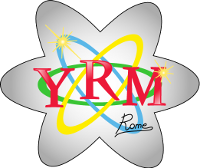Description
Galaxy clusters are the largest gravitationally bounded objects in the Universe. They are massive structures (M = 10^13 - 10^15 M_sun) containing tens to hundreds of galaxies interacting in a common potential well. Observations show that 10-20% of the total mass is made by hot (T=10^7-10^8 K) and diffuse ne= 10^(-4) - 10^(-2) cm^(-1) called IntraClusterMedium(ICM), emitting in the X-Ray band by thermal Bremsstrahlung.
Stars and galaxies form only 3% of the total mass, so the main contribute to mass (80%) is given by non baryonic matter called dark matter.
The Cold Dark Mattermodel suggests that galaxy clusters, as observed today, are formed by hierarchical clustering of smaller structures. In this context, studying galaxy cluster mass function is crucial to trace the expansion history of the Universe and the cosmological structure formation, allowing us to constrain cosmological parameters.
In order to determine the cluster mass function, galaxy cluster mass measurements on large cluster samples are required. Two widely used approaches to do this are based on the weak gravitational lensing effect and on the X-ray emission for thermal Bremsstrahlung from ICM. Weak gravitational lensing is a unique technique that allows to probe the distribution of dark matter in the Universe. Mass determination uses measurements of small distortions in the shape of background galaxy images, caused by the relativistic curvature of space-time due to foreground mass structures. We present the weak lensing analysis of the cluster Abell 2219, describing the technique used to obtain accurate measurements of the shape as well as the removal of the systematic effects.
An accurate mass estimation requires also a careful selection of background galaxies to not include unlensed sources which lead to a dilution, underestimating the signal up to a factor 3 in the inner region. To this aim we select galaxies using the Cosmos photometry and photometric redshifts to identify where low and high redshift galaxies lie in color-color diagrams. The weak lensing technique has the advantage that does not require assumptions on morphology or dynamical state of the cluster, although it gives a measurement of projected mass instead of the three dimensional one and is sensible to projection effects. Complementary, the X-Ray emission measures the 3D mass but strongly depends on assumptions made on the models. In this framework we present a volume limited sample of 51 clusters observed by Chandra and XMM-Newton.
The data are used to derive X-ray brightness surface and 2-D temperature proles. These proles are deprojected and used to estimate the hydrostatical total mass and gas mass profiles. The innovation of our analysis technique is the use of a new particle background models for both Chandra and XMM observations. In particular we present the Chandra ACIS-I camera particle background. We studied particle background behavior for the continuum and lines obtaining an analytical model that predicts the spatial variation of the background to better than 1% on the continuum and 5% on the lines. This accuracy allow us to separate background from signal also up to the outskirts of the cluster where thermal Bremsstrahlung emission is very low.
We use our data to investigate the effect on the mass measurements due to cross calibration between Chandra and XMM-Newton instruments. Furthermore, X-ray mass profiles are compared with gravitational lensing mass estimates to investigate the bias differences, predicted by numerical N-body simulations, of the two mass measurements techniques.
Authors
Iacopo Bartalucci
(Università di Roma “Tor Vergata”)
Ilaria Formicola
(Università di Roma “Tor Vergata”)
Rossella Martino
(Università di Roma “Tor Vergata”)

